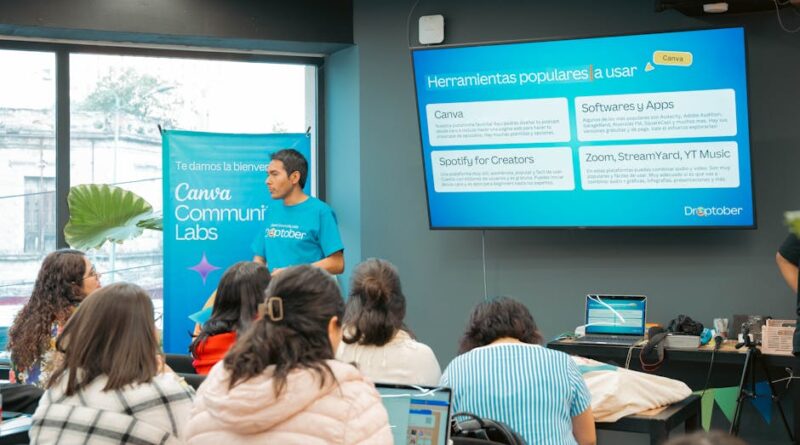Educational Apps for Students: Enhancing Learning in the Digital Age
Welcome to the digital era, where information is at our fingertips and learning has taken on a whole new dimension. With the rise of smartphones, tablets, and laptops, students have a plethora of educational resources available to them through educational apps. These apps are not only engaging and interactive but also cater to individual learning styles, making education more accessible and enjoyable. In this article, we will explore the world of educational apps for students, delving into their benefits, drawbacks, and the future of learning in the digital age.
The Evolution of Educational Apps

Education has come a long way from traditional textbooks and chalkboards. The evolution of technology has revolutionized the way we learn, with educational apps playing a significant role in this transformation. From interactive games that teach math and science to language learning apps that provide real-time feedback, educational apps have made learning more engaging and personalized. With the convenience of accessing information anytime, anywhere, students can now take their education into their own hands.
One of the key advantages of educational apps is their ability to cater to different learning styles. Visual learners can benefit from interactive diagrams and videos, auditory learners can listen to audio lectures, and kinesthetic learners can engage in hands-on activities. This personalized approach to learning ensures that every student can find a method that works best for them, ultimately leading to improved retention and understanding of the material.
The Benefits of Educational Apps

There are numerous benefits to incorporating educational apps into the classroom and at home. One of the main advantages is the ability to make learning more interactive and engaging. Traditional textbooks can often be dull and uninspiring, leading to disinterest and disengagement among students. Educational apps, on the other hand, use gamification and interactive elements to make learning fun and enjoyable. This not only motivates students to learn but also helps them retain information better.
Furthermore, educational apps allow for self-paced learning, enabling students to progress at their own speed. This is particularly beneficial for students who may struggle with certain subjects or concepts. With educational apps, students can revisit material as many times as needed until they fully grasp the content. This personalized approach to learning can boost students’ confidence and academic performance.
Another advantage of educational apps is their accessibility. With smartphones and tablets becoming more affordable and widespread, students from all backgrounds can access educational apps. This levels the playing field and ensures that every student has the opportunity to learn and succeed. Additionally, educational apps can be used outside of the classroom, allowing students to continue learning at home or on the go.
The Drawbacks of Educational Apps

While educational apps offer numerous benefits, there are also some drawbacks to consider. One of the main concerns is the potential for distraction. With so many apps and games available on smartphones and tablets, students may be tempted to veer off course and spend more time on entertainment apps than educational ones. It is essential for educators and parents to monitor students’ app usage and ensure they are staying on task.
Another drawback of educational apps is the lack of human interaction. Traditional classroom settings provide students with the opportunity to interact with teachers and peers, ask questions, and engage in discussions. Educational apps, while interactive, may not fully replicate this social aspect of learning. It is important for students to have a balance of both digital and in-person learning experiences to develop essential social skills.
Additionally, there is a concern about the quality of content on educational apps. Not all apps are created equal, and some may contain inaccuracies or outdated information. It is essential for educators to vet educational apps and ensure they align with the curriculum and educational standards. Providing students with high-quality, reliable content is crucial for their academic success.
The Future of Learning: Integrating Educational Apps

As technology continues to advance, the future of learning is becoming increasingly digital. Educational apps are poised to play a vital role in this shift, offering innovative solutions to age-old educational challenges. From personalized learning experiences to real-time feedback and assessment, educational apps have the potential to transform education as we know it.
One exciting development in the world of educational apps is the use of artificial intelligence (AI) and machine learning. These technologies can analyze students’ learning patterns and adapt the content accordingly, providing a truly personalized learning experience. AI-powered educational apps can identify areas where students are struggling and offer additional support, ultimately improving learning outcomes.
Another trend in educational apps is the incorporation of augmented reality (AR) and virtual reality (VR) technologies. These immersive technologies can create engaging and interactive learning experiences, allowing students to explore complex concepts in a virtual environment. From virtual field trips to interactive science experiments, AR and VR educational apps are revolutionizing the way students learn.
Expert Opinions
According to Dr. Sarah Jones, a leading expert in educational technology, “Educational apps have the potential to revolutionize the way we learn. By incorporating interactive elements, personalized feedback, and cutting-edge technologies, educational apps can make learning more engaging and effective.” Dr. Jones emphasizes the importance of using educational apps as a supplement to traditional teaching methods, rather than a replacement.
Professor John Smith, an advocate for digital literacy in education, believes that educational apps can bridge the gap between students from different socioeconomic backgrounds. “With the accessibility of smartphones and tablets, students from all walks of life can access educational apps and enhance their learning experience. This democratization of education is essential for creating a more equitable society.”
Conclusion
To wrap things up, educational apps have transformed the way students learn, offering a personalized and engaging approach to education. From interactive games to AI-powered learning platforms, educational apps cater to individual learning styles and make learning more accessible. While there are some drawbacks to consider, the benefits of educational apps far outweigh the challenges. As we look to the future of education, integrating educational apps into the classroom will be essential for preparing students for success in the digital age.
Whether you’re a student, educator, or parent, exploring the world of educational apps can open up new possibilities for learning and growth. Embrace the power of technology and discover how educational apps can enhance your educational journey.




